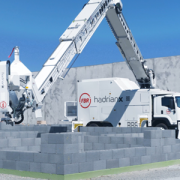Challenging suppliers to seek a wider knowledge resource
#constructionindustry #sustainable #architects #localauthorities #contractors #developers #innovation #buildingtechnology #MMC #modular #suppliers #adhesvies @LiquidPlastics
We hear a lot in the media relating to Offsite Construction, Modular Buildings and Modern Methods of Construction – the success of this approach is key to the future success of our construction industry. The challenge for component or material suppliers is to be able to transfer their ideas and knowledge to the specifiers and manufacturers. It has been my experience that we have an abundance of companies in the UK with innovative ideas for Offsite Manufacturing in the construction industry, but they may be failing to access a much wider knowledge resource.
Many material and component suppliers from diverse industries have something to offer for offsite construction, even if their heritage is not from a construction background. I see my responsibility as bringing positive ideas to the table and helping manufacturers to avoid reinventing the wheel. Here are two examples from my own organisation’s experience.
Adhesives Create Opportunities
My first example is the rail market. In the 1980’s most trains and carriages were constructed using traditional joining technologies (welding, rivets, and other mechanical fixings). This limited design possibilities and with a greater reliance on a very skilled workforce, created a restriction on what could be achieved. With the main train manufacturers, Sika worked on providing elastic bonding systems which helped in so many ways. It allowed design flexibility as alternative materials could be used. Mixed materials could be joined, with the use of bonded solutions allowing structural integrity to be improved dramatically. Bonded processes allowed greater process repeatability which in turn improved quality and reduced the requirement for skilled labour. The use of elastic and structural adhesives is now common amongst all rail rolling stock manufacturers. I would make the same recommendation to the Offsite Construction market – there is an alternative to the mechanical fix norm.
Dramatically Improve Efficiency
The second example is the automotive Industry. Whilst the offsite and modular building market still sees a degree of bespoke manufacturing, the trend is towards reducing components and design complexity, and increasing potential output. The challenge again is that many traditional construction techniques are used where an automotive manufacturing approach will see reduced costs, higher levels of efficiency, and higher quality. The automotive market provides vehicles of different specifications allowing customers to make choices but can still have a production line running at sub 60 seconds per work-station. The automotive industry relies on building a critical mass of vehicles so any ideas that can level out the build process and reduce build time is welcome. Whilst employing many engineers, the automotive manufacturers utilise a pool of highly experienced and knowledgeable suppliers to create ideas, new concepts, and novel ways to help them achieve their goals.
We Are Here to Help
I would therefore venture that the Offsite, Modular, and MMC market can benefit from a lot of great ideas and know-how from key suppliers. I would also say an investment in key partners is extremely valuable. The challenge is for the industry to work together, to create collaboration, and more importantly to develop the right supplier partnerships.
For more information on Sika Offsite, contact James Taylor on 01707 363893 or visit the
below website.



